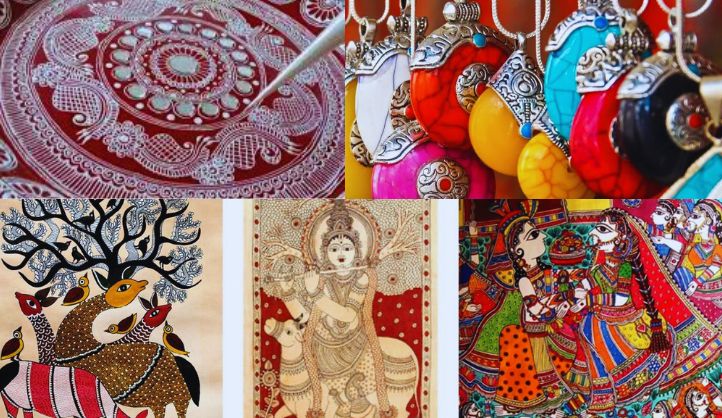Art and Craft of Uttarakhand
Uttarakhand, located in the Himalayan area of India, is a land of breathtaking scenery, peaceful beauty, and a rich cultural past. Known for its snow-capped mountains, sacred rivers, and verdant valleys, the state is also home to a treasure trove of traditional art and crafts that reflect the different history and cultures that have flourished here for generations. Uttarakhand’s handicrafts, which range from elaborate wood carvings to colorful textile arts, are not only means of artistic expression but also preserve long-standing customs and convey the people’s histories and relationships with the land.
Traditional Wood Carving:
An Evergreen Craft
Wood carving is one of Uttarakhand’s most well-known crafts, especially in the Kumaon and Garhwal areas. These areas boast a renowned extensive tradition of building wooden temples and shrines that showcase the exquisite workmanship of regional craftspeople. The abundant deodar, oak, and walnut trees in Uttarakhand’s deep woods provide the wood required for carving.
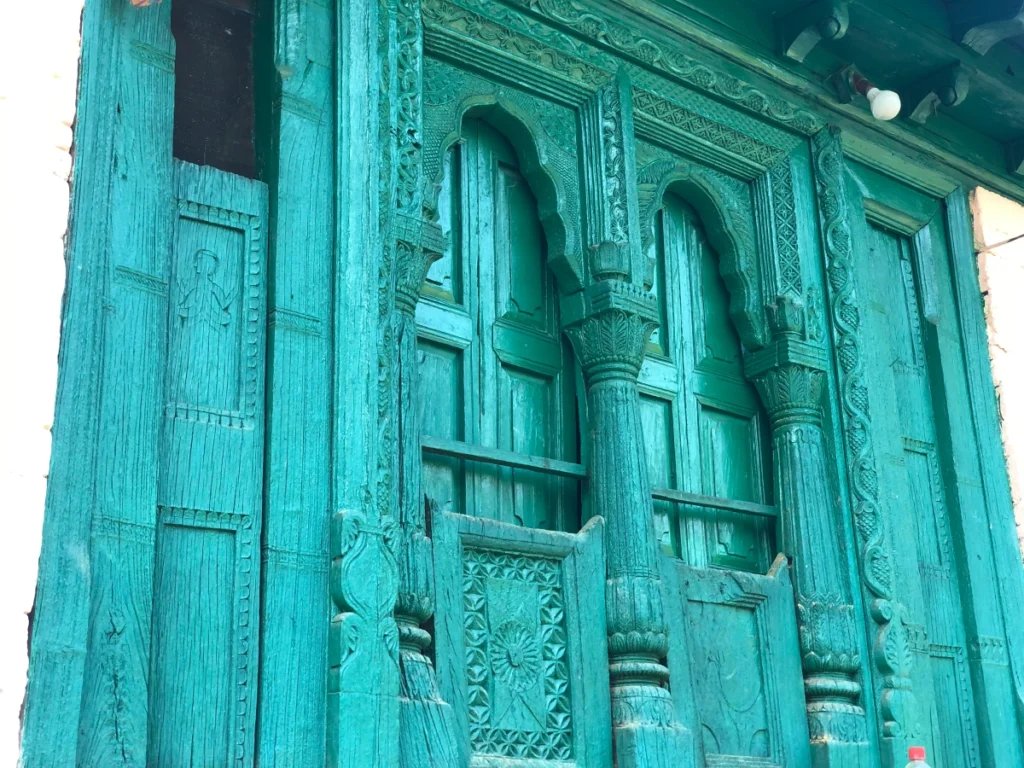
In Uttarakhand, wood carving is a generation-old art form that demands extraordinary ability. Artists adorn the windows, doors, and ceilings of temples, homes, and other buildings with elaborate carvings. The patterns frequently include nature-inspired themes such as flowers, animals, and geometric shapes. These carvings are not just ornamental but also contain symbolic connotations, representing the region’s spiritual beliefs and deep connection to nature.
In current times, wood carving from Uttarakhand has transcended its traditional roots and found a position in the worldwide market. Uttarakhand’s woodcrafts, which range from furniture and ornamental items to religious idols and mementos, have become well-known and appreciated all over the world. These sculptures are a great addition to any home because of their exceptional craftsmanship and attention to detail.
Aipan: Uttarakhand’s Sacred Art
The Kumaon area of Uttarakhand is the primary location for the traditional floor painting art form known as aipan. During religious events, festivals, and weddings, artists decorate the floors of houses, temples, and courtyards with this elaborate and vibrant art form. In Aipan, they create symmetrical patterns by applying rice paste to the ground to form designs that
Aipan:
The Sacred Art of Uttarakhand

The Kumaon area of Uttarakhand is the primary location for the traditional floor painting art form known as aipan. During religious events, festivals, and weddings, artists decorate the floors of houses, temples, and courtyards with this elaborate and vibrant art form. In Aipan, they create symmetrical patterns with rice paste, which they spread on the ground to form patterns that represent luck, fertility, and prosperity.
Aipan artists frequently feature lotus blossoms, conch shells, peacocks, and other auspicious symbols in their creations. People think that many of the motifs bring favors to the home, and locals closely link the art to their spiritual rituals. The purpose of the Aipan designs is to ward off evil spirits and bring good fortune during holidays like Diwali, Dashain, and Holi.
Painting in Aipan is a painstaking procedure that calls for accuracy and patience. The craftsman creates the designs with a wooden stick or their fingers after mixing the rice paste to the proper consistency. The distinctive feature of Aipan is that each artist adds a personal touch to every piece of art they create freehand without the use of stencils.
Woolen Crafts and Textiles:
The Fabric of Uttarakhand’s Heritage
For ages, Uttarakhand’s woolen crafts have been a vital component of its cultural identity. The hard winters in the area have given the people a profound understanding of wool and weaving methods that they have carried down through the years. Skilled craftspeople create beautifully designed woolen clothing, shawls, stoles, and carpets, frequently utilizing regionally specific techniques.
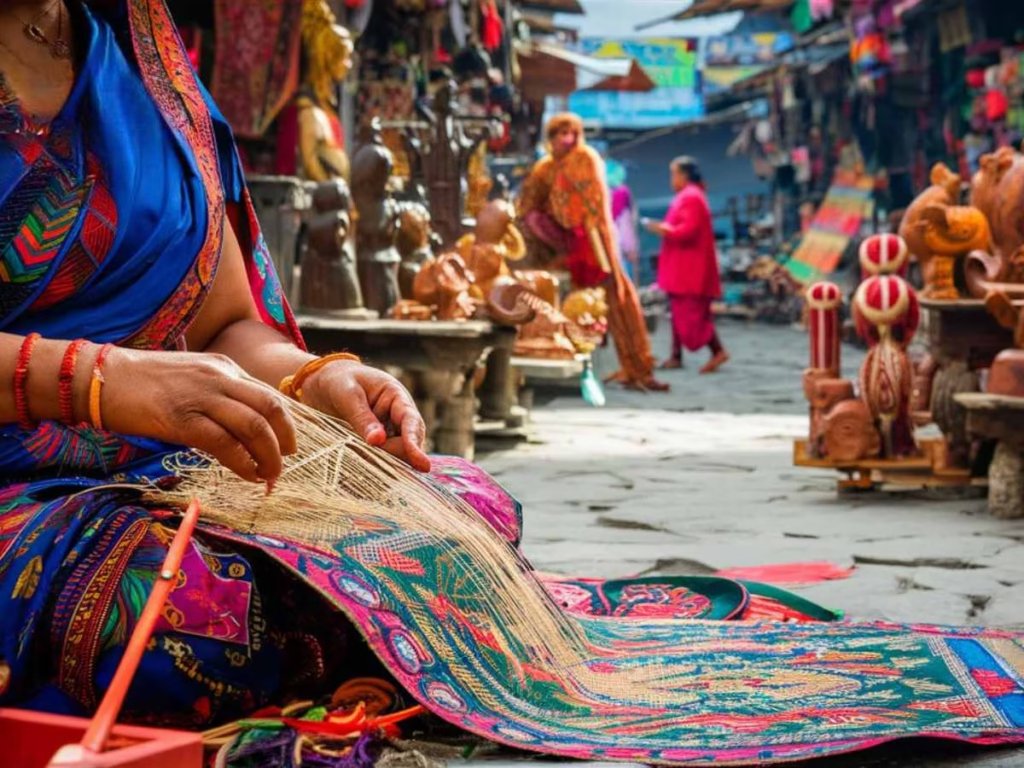
Among Uttarakhand’s most well-known woolen crafts, artisans create the renowned Kullu and Pashmina shawls, which northern India equally well-likes. They weave fine wool into these shawls, dye them in vivid hues, and frequently embellish them with geometric or floral motifs. Artisans use natural dyes like madder roots and indigo to give woolen textiles a rustic, earthy look that fashionistas and collectors highly prize.
The people of Uttarakhand highly value the workmanship of the rugs and carpets they create, in addition to their woolen fabrics. Artisans frequently adorn these handwoven items, which emphasize premium materials, with traditional motifs that capture the region’s natural beauty, like floral patterns and mountain sceneries. The carpets in Uttarakhand are a beautiful and useful addition to any house because of the weaving procedures that guarantee their longevity.
The Craft of Basketry: Crafting the Bounty of Nature
Another native skill that the people of Uttarakhand have been doing for ages is basketry. Usually, people use bamboo, cane, or grass to make the baskets; they can easily find these materials in the.
Metalwork and Jewelry:
Crafting Tradition with Elegance
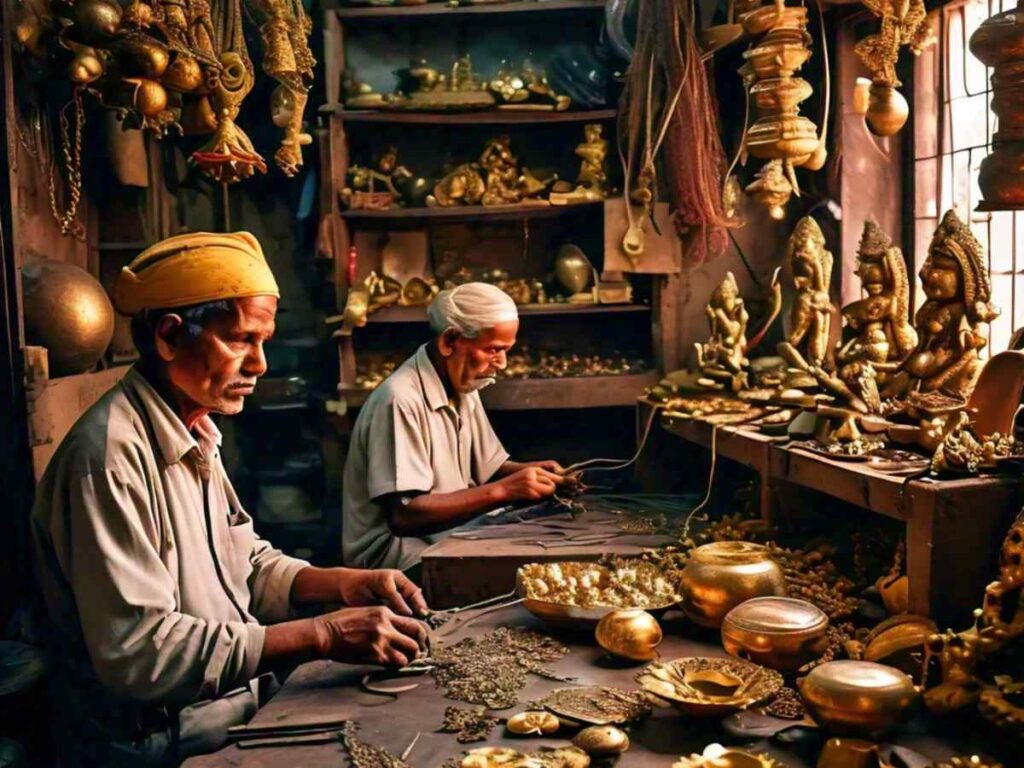
Metalworking has a long history in Uttarakhand, especially in the production of sacred objects and jewelry. The region’s artists have perfected the techniques of casting, etching, and decorating metal to produce elaborate, aesthetically pleasing, and useful objects.
A major component of Uttarakhand’s metalwork is temple jewelry, which features intricate designs crafted from gold, silver, and other metals. People frequently wear these jewelry pieces, which feature symbolic motifs like peacocks, flowers, and deities, during religious rites and rituals. Additionally, the craftspeople create statues of gods and goddesses that devotees worship at temples.
The people of Uttarakhand make folk jewelry that the women of the area wear in addition to religious crafts. Artisans frequently make this jewelry of silver and embellish it with jewels, making it an essential component of traditional dress, particularly at weddings and celebrations.
Ramban Craft:
Sustainable Innovation
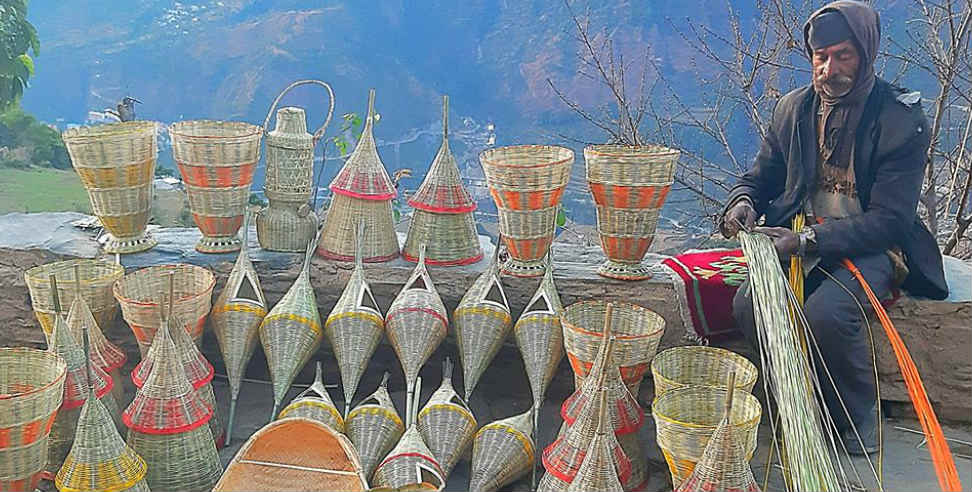
The Ramban craft, which is exclusive to Uttarakhand, uses natural fibers and wild grass to make ropes, mats, baskets, and coiled containers. Traditionally, artisans used the grass to tie cattle and make ropes, but they have since innovated to create eco-friendly products. Since the majority of the items are biodegradable and do not use artificial materials, this craft is a perfect example of zero-waste craftsmanship and sustainable living.
Contemporary Trends in Uttarakhand’s Craft Scene
Even though Uttarakhand’s ancient arts and crafts are still fundamental to the state’s identity, modern artists and craftspeople are starting to modify these customs to suit contemporary tastes. These days, designers are producing new products that are both aesthetically beautiful and useful by combining traditional workmanship with modern design.
For example, contemporary craftspeople are fusing classic patterns into their designs while producing fashionable apparel and accessories using eco-friendly fabrics and natural dyes. Additionally, a lot of craftspeople are now exhibiting their creations at exhibitions, craft fairs, and online venues, which has helped spread awareness of Uttarakhand’s crafts throughout the world.
Additionally, Uttarakhand’s ecotourism and handicraft tourism have been vital to the preservation and promotion of these crafts. The area has established a viable model for maintaining cultural heritage and giving local craftspeople a living by interacting with visitors and enticing them to try out the traditional arts.
Conclusion
ttarakhand’s art and craft are not just forms of expression—they are living traditions that connect people to their roots, beliefs, and natural surroundings. They tell stories of the mountains, the gods, the festivals, and the daily lives of its people. As travelers, art lovers, and responsible citizens, supporting these crafts means supporting the cultural soul of the region.
Whether you visit a small artisan village in Almora or buy a handwoven shawl at a fair, remember: you’re carrying a piece of the Himalayas with you.

